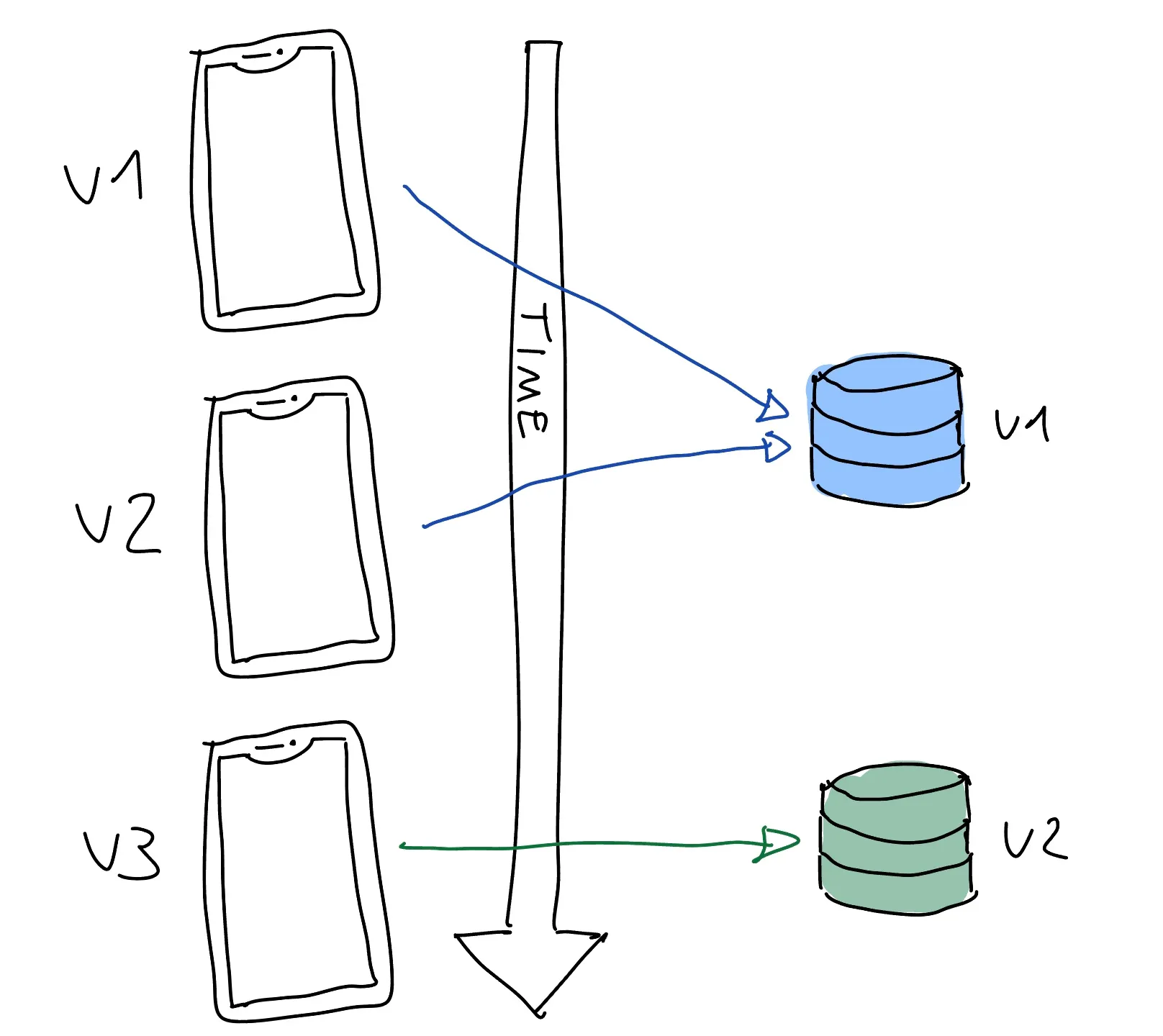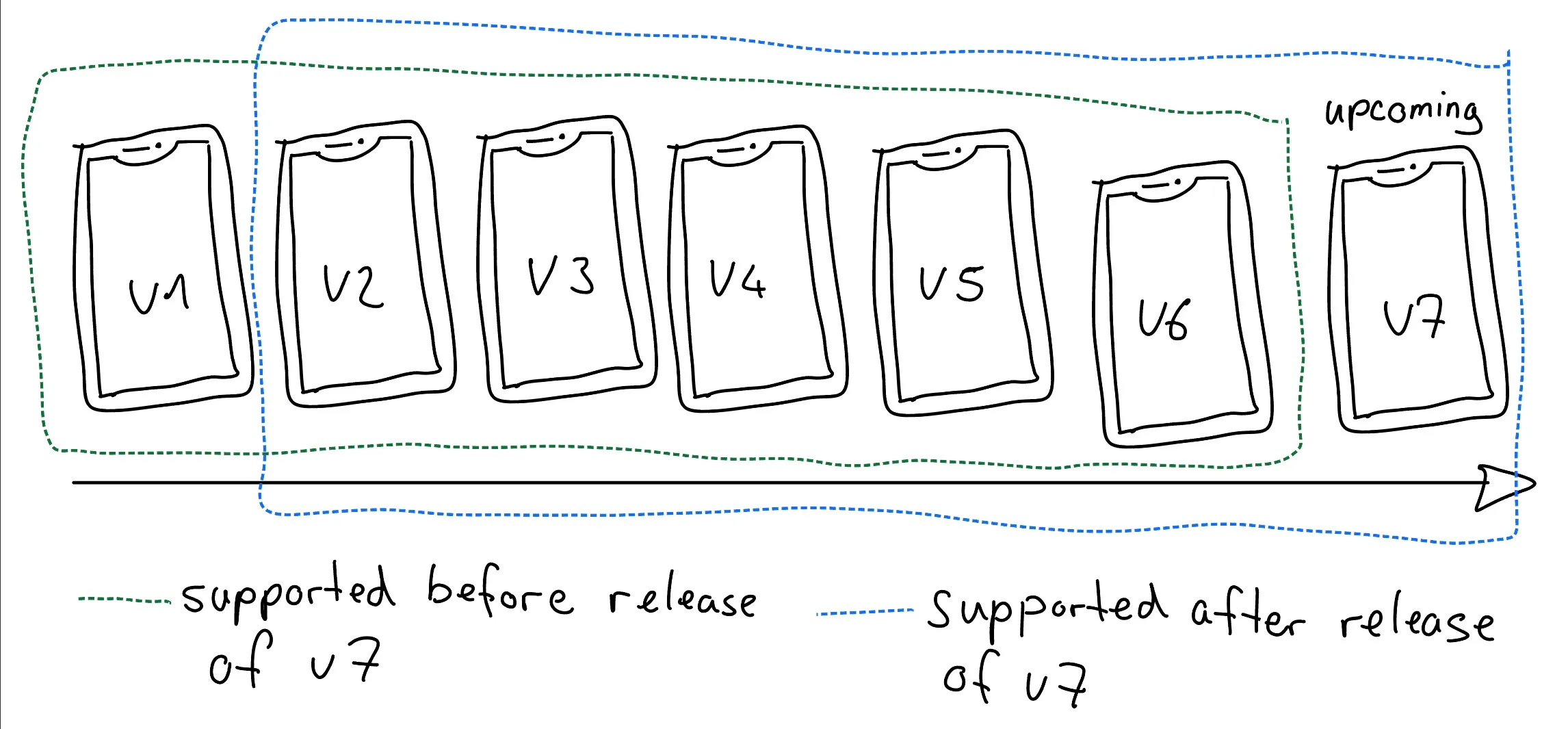Rolling Release Window
A rolling release window is a strategy to be able to safely deprecate old app versions as well as old APIs your app uses. In this article, I’ll explain what it is and how you can implement it.
But first, let me explain the problems it can solve. Mobile apps have a couple of problems, based on their very own nature.
While most users will update to new app versions in a matter of days, there will be a long tail of users who are several versions behind. This is due to user that don’t have automatic updates enabled. The automatic updates are also not updating an app instantaneously. Therefore, you can not assume that all users will get an update, ever.
At the same time, old app versions are unlikely to be regularly tested by the mobile team because it is a lot of effort, with little payoff.
This long tail of old app versions makes it basically impossible to deprecate old APIs used to communicate with the backend. This is pictured in the image below. The versions v1 and v2 of the app use the API v1 of the backend. As the times goes on, you see the API no longer makes sense for the app and v2 API is established on the backend. The app implements it and no longer uses v1 of the backend in v3 of the app. As a result, the backend teams want to remove v1 of their API. Since old app versions basically never die, they, however, can’t get rid of v1 of the backend API.

Now we see that we have additional testing effort for old app versions and old backend APIs. Most likely, the deprecated backend APIs are also neglected and their reliability and security deteriorates.
Backend APIs are not the only things, that can’t be removed. The same problem applies to feature flags, remote translations, third party APIs, and the list goes on.
Another important point is, that security updates to apps can’t be rolled out to older app versions, so only updated app versions are getting security updates.
The Solution — A Rolling Release Window
The solution to all the above-mentioned problems are rolling release windows. A rolling release window is a basically a set of the latest supported app versions. Let’s say we want to support the latest 7 app versions. After an app version is no longer in the set of the latest 7 app versions, we do a force update to the oldest app version which is still in the set of the supported app versions. This is also pictured in the image below.

This strategy allows you to reduce testing efforts, get rid of old app versions, get rid of old backend APIs and so on. It solves all the above-mentioned problems.
A common issue with force updates is that users of an app can get quite annoyed by them. So you have to make sure to support enough versions, so that ideally all users updated from a version which drops out of the supported versions, or that at least only a small amount of users is affected.
Another benefit of rolling release windows is that it provides an easy-to-understand framework to communicate to stakeholders when a specific app version is no longer supported. This is especially helpful for the backend teams.
Make sure that you test the force update mechanism in the app in production. This mechanism should also be implemented for the first public release of an app. Often enough, the force update mechanism is never actually tested in production. This is quite similar to backups which are never tried to be restored.
If you’re following a specific versioning scheme, you can even completely automate this strategy.
Originally published on Medium.